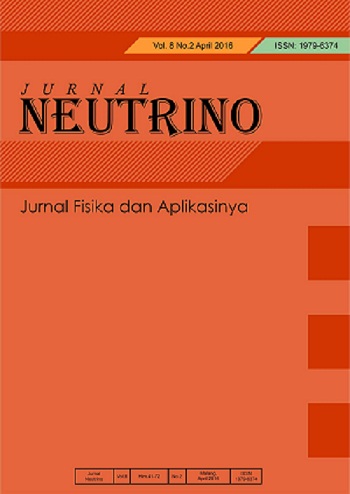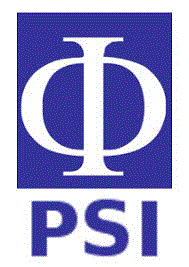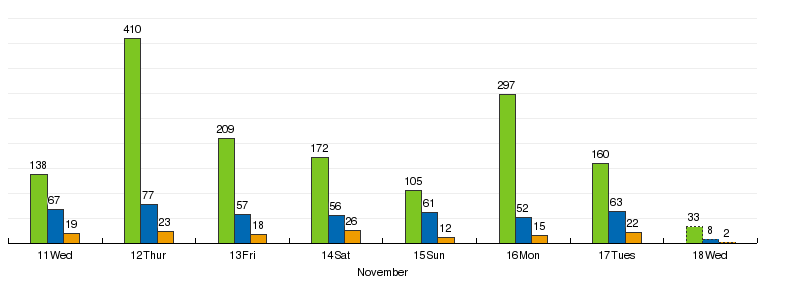IDENTIFICATION OF THE INTERACTION OF LITHIUM HEXAFLUOROPHOSPHATE SALT AND ETHYLENE CARBONATE (EC) SOLVENT IN LITHIUM ION BATTERY REDOX EVENTS USING CLASSICAL MOLECULAR DYNAMICS (MD) SIMULATION
Abstract
The aim of the research is to find the maximum velocity possessed by the molecules (Maxwell velocity distribution) of the solvation event of lithium hexafluorophosphate salt interacting with ethylene carbonate (EC) solvent. We examined the electrolyte simulation of the reaction between lithium ions and hexafluorophosphate with ethylene carbonate (EC) solvent while the potential involved is the Lennard Jones potential. We use the epsilon (ε) and sigma (σ) parameters of Lennard Jones. These parameters are the independent variables used as a reference in determining the response variable which is the velocity of the molecules. Due to the large number of molecules involving the parameters and response variables per molecule mentioned above, we use a microcanonical assembly system (N, V, E) where the number of particles (N), system volume (V) and energy (E) are constant. The energy kT and the distance between molecules σ of 1 are inputted to the program in order to facilitate the computer in the simulation process. Solvation events where litium hexafluorophosphate salt and solvent ethylene carbonate interact then in the final positions of particles (equilibrium) the result is almost symmetry randomly in all planes. The velocity used is the most frequent velocity ( ) and is related to the kinetic energy.
Keywords
Full Text:
PDFReferences
- Septiana, A. R., Kartini, E., Honggowiranto, W., Sudaryanto, S., & Hidayat, R.. Efek Penggunaan Cairan Ionik sebagai Aditif terhadap Konduktivitas Ionik Elektrolit Baterai Ion Litium. Indonesian Journal of Applied Physics. 2019; 9(02):84-92.
- Saputry, A. P., Lestariningsih, T., & Astuti, Y.. Pengaruh rasio LiBOB: TiO2 dari lembaran polimer elektrolit sebagai pemisah terhadap kinerja elektrokimia baterai lithium-ion berbasis LTO. Jurnal Kimia Sains dan Aplikasi. 2019; 22(4):136-142.
- Septiana, A. R., Kartini, E., Honggowiranto, W., Sudaryanto, S., & Hidayat, R.. Efek Penggunaan Cairan Ionik sebagai Aditif terhadap Konduktivitas Ionik Elektrolit Baterai Ion Litium. Indonesian Journal of Applied Physics. 2019; 9(02): 84-92.
- Hasa, I., Haregewoin, A. M., Zhang, L., Tsai, W. Y., Guo, J., Veith, G. M., ... & Kostecki, R.. Electrochemical reactivity and passivation of silicon thin-film electrodes in organic carbonate electrolytes. ACS applied materials & interfaces. 2020; 12(36):40879-40890.
- Iizuka, A., & Shibata, E.. Mass Spectrometric Study on Volatilization Behavior of Electrolyte Solvents of Lithium-Ion Batteries. Materials Transactions. 2021; 62(7): 1030-1038.
- Ravikumar, B., Mynam, M., & Rai, B.. Effect of salt concentration on properties of lithium ion battery electrolytes: a molecular dynamics study. The Journal of Physical Chemistry C. 2018;122(15): 8173-8181.
- Hossain, M. J., Pawar, G., Liaw, B., Gering, K. L., Dufek, E. J., & Van Duin, A. C.. Lithium-electrolyte solvation and reaction in the electrolyte of a lithium ion battery: A ReaxFF reactive force field study. The Journal of chemical physics. 2020;152(18).
- Gao, T., & Lu, W.. Mechanism and effect of thermal degradation on electrolyte ionic diffusivity in Li-ion batteries: A molecular dynamics study. Electrochimica Acta. 2019;323:134791.
- Abdulah, M. Mekanika Statistik. Bandung: Institut Teknologi Bandung; 2017.
- Thomas, M. E., Thomas, J., & Sajini, T.. QM/MM methodology for studying the influence of ionic liquids in chemical reactions. In Theoretical and Computational Approaches to Predicting Ionic Liquid Properties (pp. 189-207). Elsevier. 2021
- Zhao, S., Cieplak, P., Duan, Y., & Luo, R.. Transferability of the Electrostatic Parameters of the Polarizable Gaussian Multipole Model. Journal of chemical theory and computation. 2023; 19(3), 924-941.
- Zhang, X., & Kuroda, D. G.. An ab initio molecular dynamics study of the solvation structure and ultrafast dynamics of lithium salts in organic carbonates: A comparison between linear and cyclic carbonates. The Journal of chemical physics. 2019;50(18).
- Wu, Y., Bo, S. H., & Xia, Y.. Solid-electrolyte interphase formation process on Li2TiSiO5 anode in LiPF6-based carbonate electrolyte. Journal of Power Sources. 2020; 467: 228292.
- Tezel, A. O., Sunde, S., Gómez-Cámer, J. L., Novák, P., & Svensson, A. M.. Effect of a boron based anion receptor on graphite and LiFePO4 electrodes. Journal of The Electrochemical Society. 2020; 167(2): 020525.
- Goddard, W. A.. Classical Force Fields and Methods of Molecular Dynamics. Computational Materials, Chemistry, and Biochemistry: From Bold Initiatives to the Last Mile: In Honor of William A. Goddard’s Contributions to Science and Engineering. 2021;1063-1072.
- Ta, D. H.. Adhesive Strength of Hexadecane on Different Iron Compounds: an MD Approach. Journal of Technical Education Science. 2022;17(1): 1-10.
- Massaro, A., Avila, J., Goloviznina, K., Rivalta, I., Gerbaldi, C., Pavone, M., ... & Padua, A. A.. Sodium diffusion in ionic liquid-based electrolytes for Na-ion batteries: the effect of polarizable force fields. Physical Chemistry Chemical Physics. 2020; 22(35): 20114-20122.
- Galvez-Aranda, D. E., Ponce, V., & Seminario, J. M.. Molecular dynamics simulations of the first charge of a Li-ion—Si-anode nanobattery. Journal of molecular modeling. 2017; 23: 1-16.
- Galvez-Aranda, D. E., & Seminario, J. M.. Ab initio study of the interface of the solid-state electrolyte Li9N2Cl3 with a Li-metal electrode. Journal of The Electrochemical Society. 2019; 166(10): A2048.
DOI: https://doi.org/10.18860/neu.v16i2.23910
Refbacks
- There are currently no refbacks.
Copyright (c) 2024 Ego Srivajawaty Sinaga

This work is licensed under a Creative Commons Attribution-NonCommercial-ShareAlike 4.0 International License.
Published By:
Physics Study Pragramme, Faculty of Science and Technolgy, Universitas Islam Negeri (UIN) Maulana Malik Ibrahim Malang, Indonesia
B.J. Habibie 2nd Floor
Jl. Gajayana No.50 Malang 65144
Telp./Fax.: (0341) 558933
Email: neutrino@uin-malang.ac.id
This work is licensed under a Creative Commons Attribution-NonCommercial-ShareAlike 4.0 International License
View My Stats










